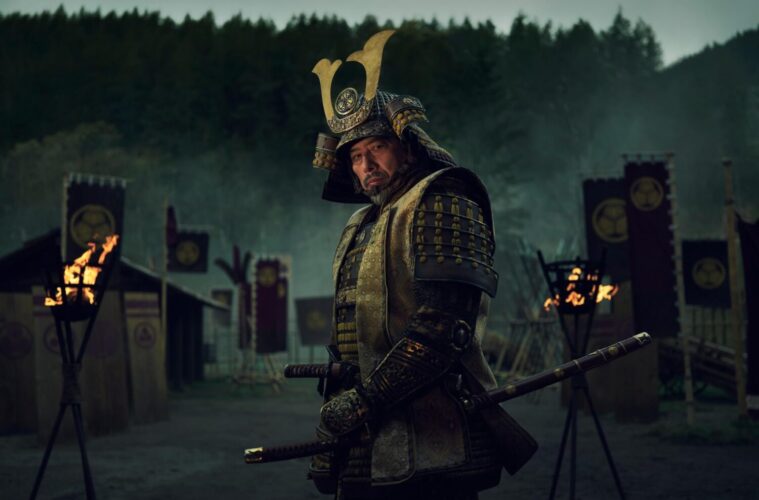 In this week’s UnBinged, we look at a few new series with a familiar face. These are reworked and reimagined time-tested tales with established fan bases made shiny and new for the next generation. From an adaptation of a miniseries that your mother loved to a live-action version of the cartoon you adored as a kid, here are a few shows that streaming networks tried to improve for your benefit. Did it work?
In this week’s UnBinged, we look at a few new series with a familiar face. These are reworked and reimagined time-tested tales with established fan bases made shiny and new for the next generation. From an adaptation of a miniseries that your mother loved to a live-action version of the cartoon you adored as a kid, here are a few shows that streaming networks tried to improve for your benefit. Did it work?
Avatar: The Last Airbender (Netflix)
After nailing it with the adaptation of One Piece, Netflix appears to be their apology tour for Death Note and Cowboy Bebop with Avatar: The Last Airbender, the live-action version of the much-beloved Nickelodeon series. Given the fondness for the original series, the devotion of the fanbase, and the disaster that was the previous adaptation, updating Avatar was a bit of a gamble.
For the uninitiated, Avatar: The Last Airbender is set in the Earth Kingdom, where nations are defined by the elements of fire, water, earth, and air. There are telepaths who can manipulate the elements, but only one who can manipulate all four, known as an avatar. It has been many years since one has been born, and during that absence, the Fire Nation has seized power, unaware of the existence of young airbender and avatar Aang (Gordon Cormier). After a century trapped in ice, Aang along with waterbender Katara (Kiawentiio) and her brother Sokka (Ian Ousley), must finish his training and find a way to end the Hundred Years’ War so he can bring balance to the world.
For purists looking for a straight adaptation, there are some changes to the original story as the live action version finds its way, but key moments are still intact enough to make the fandom happy. And clearly, Netflix did not want to disappoint. The production is filled with lovely moments thanks to stellar casting, set design, and a lively script that caters to both long-time fans and newbies with no prior knowledge of the original show. And while there are several times when the CG doesn’t quite keep up with the demands of the script, the heart of the original series is still there, along with plenty of fan service.
Both the young and adult cast competently capture their animated counterparts and the bit players who help make up this unique world. Like the animated series, the characters are given complexity one wouldn’t usually find in fantasy fiction or a 2D world. Cormier does an admirable job creating a flesh and blood Aang, but it is Paul Sun-Hyung Lee as Uncle Iroh who brings home the raw emotional moments.
Avatar: The Last Airbender is pulling triple duty in not only providing fans with a fanciful live action version of their favorite series, but also erasing the shadow of a less than stellar film version while helping rebuild Netflix’s reputation for animation adaptations. The result is a charming version of the Nickelodeon series that should make fans smile from ear to ear.
Shogun (FX/Hulu)
FX/Hulu’s contemporary adaptation of James Clavell’s Shogun takes a step in the right direction with its extraordinary reworking of the story “Anjin” John Blackthorne and his time in Feudal Japan. It is a big swing for the network, as the original miniseries has long been considered landmark television, but this reimagining is not only a revelation, but a much needed rectification for a flawed story.
A war between Japan’s Council of Regents has been brewing since the death of the Shogun. Four of the regents have set their sights on Lord Toranaga (Hiroyuki Sanada), intimidated by his growing influence. But just as the vultures circle, English pilot Blackthorne (Cosmo Jarvis) arrives with the goal of disrupting Portuguese-Catholic relations in Japan, only to become a pawn in the escalating conflict.
This isn’t your mother’s Shogun. While the romanticized 1980 version featuring Richard Chamberlain lives strong in the hearts of Boomers, but is very much a product of its time. Contemporary critics have taken issue with the story as it leans heavily on the “white savior” trope as Blackthorne becomes a hero who rises to prominence in a foreign culture. So while the original series might have served as primetime masturbation material for housewives in the Reagan era, these days the story is dubious at best.
In this big, bold remake, Blackthorne is still key, but is not the central character. Instead, Toranaga, Lady Mariko (Anna Sawai), the politicians that make up the Council of Regents and its court are very much the focus, as they should be. And while the romance between Blackthorne and Lady Mariko is still prominent, it isn’t fundamental to the narrative. Instead, Toranaga and those in his court take center stage.
This Shogun is a rich and complex reworking of the original saga. Righting the wrongs of the original narrative by highlighting the strengths of the story and placing problematic tropes in the backseat, thus giving us an inspired remake for a new generation, and possibly the next.
The Walking Dead: The Ones Who Live (AMC/AMC+)
Remember when The Walking Dead audience got its first glimpse of Michonne (Danai Gurira)? She had with her two walkers as personal guard dogs to mask her scent – terrifying to behold, but missing their jaws and limbs so they were rendered pointless, with no real bite left in them. For most people, that is what has become of The Walking Dead franchise after almost 15 years. The zombie show seems horrific, but upon closer examination, the series lacks any bite. Oversaturation of the franchise has exhausted fans thanks to AMC’s nonstop rollout of zombie-related content to the point that the undead almost seems tedious.
Now they offer The Walking Dead: The Ones Who Live. So, this begs the question: What sets this series apart from all the others? For super fans, the answer is Rick and Michonne.
Led by season four showrunner Scott M. Gimple and actress/producer Gurira, The Ones Who Live takes a gander at one of the few love stories from TWD that didn’t end with one or both parties eaten, bitten, or killed by some jerk who turned evil by their own hubris. When we last saw Rick (Andrew Lincoln), he appeared to sacrifice himself to take out an entire herd of walkers, but was actually whisked away via helicopter by the Civic Republic Military. And when we last saw Michonne, she left her children to go look for him.
In the first two episodes, Rick and Michonne are on their own journeys, spending years attempting to find each other, only to lose hope and limbs along the way. When reunited, the duo fight obstacles in the form of the CRM and its minions, as well as a few familiar faces from the past. The duo must also reconcile with who they had to become to survive during their years apart and rekindle the flame that brought them together.
Oh, and occasionally fight the undead.
Watching Lincoln and Gurira slip back into their roles is certainly a treat for long-time fans who live for such moments. They alone are the reason to watch. But there isn’t much else here to draw in a crowd. The CRM as an antagonist injects the series with almost immediate ennui, as there is nothing as droll as facing off against a faceless agency. But the real issue is that the world has grown “walker weary.” Only Rick, Michonne, and promises of upcoming reunions are the only enticement for The Ones Who Live. And while the acting and world building is still top notch, only the devoted will follow this latest chapter, which offers little to newbies.
Advertising disclosure: We may receive compensation for some of the links in our stories. Thank you for supporting LA Weekly and our advertisers.

